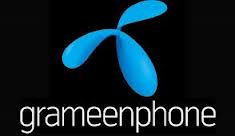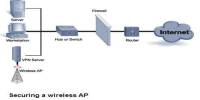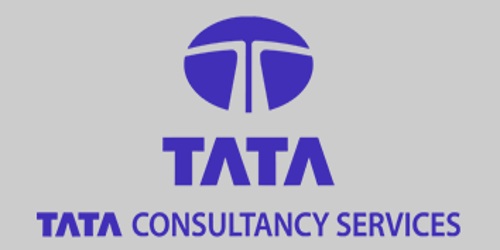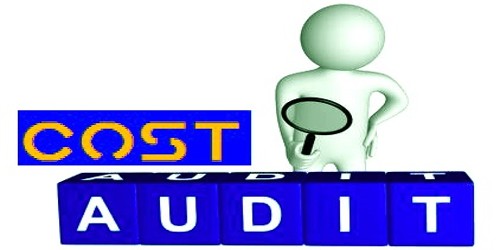Origin of the report
The report is a requirement of the supply chain management. The topic of our report has been duly approved by my project supervisor, Asst. Prof. Mr. Faruk Ahmed the reason behind choosing this topic is to evaluate the information system practiced in our country. This report therefore shows how much the companies of our country use information system to operate their functions.
Objective of the report
General objective is to see that how an organization cope with the information system to effectively make decisions and operate functional activities. Assess the level of importance of supply chain management of the company and also to determine how well the company meet up the compliance of information system. More specific objective is to provide information on Grameen phone Ltd & their supply chain management.
Scope
The scope of this report is limited to the overall description of the company, their information system-hardware, software & Information technology configuration, information system planning, supply chain management, their demand planning and supply planning.
Methodologies
In this study, exploratory research was undertaken to gain insights and understanding of their system and for preparing the assignment. To prepare this term paper, we have collected information from different sources: company personnel, things provided by the organization, internet searching and our peer group. Some information, which was not available from any of the sources, was assumed. After that a more comprehensive conclusive research was undertaken to fulfill the main purpose of the study.
Limitations of the study
Delays in getting the necessary materials to collect information from different sources
Large-scale analysis was not possible due to constraints of data.
Some parts on the report were written from individual’s perception and may vary from person to person, thus made hypothetically.
Information provided by the concerned organization was not satisfactory.
Some of the internal information is difficult to get.
The Organization Background:
GrameenPhone Ltd. is the leading organization of mobile telecommunication industry of Bangladesh. This is the first organization that brought GSM technology in mobile telecommunication for the general people of Bangladesh. The organization is not only leading the telecommunication industry, but also it has significance activities in social and cultural sector. The head office of the organization is located at – Grameen Phone Ltd. GPHOUSE Basundhara, Baridhara Dhaka-1229. At present the organization has 5 Customer Care centers, 82 GrameenPhoneCenters, 25 GrameenPhoneDistributionCenters and 651 GrameenPhone Service Desks all over the countries, which are working as branch offices.
In 1996, Bangladesh was preparing to auction off private cell phone licenses to four companies. So at the behest of Dr. Muhammad Yunus (Grameen Bank’s founder) but completely independent of Grameen Bank, a not-for-profit private company called Grameen Telecom was created. Grameen Telecom, in turn, created a for-profit company called GrameenPhone, found a foreign partner, and put in a bid; GrameenPhone received one of the four licenses on November 28, 1996 which was offered by the Ministry of Posts and Telecommunications of Bangladesh. GrameenPhone’s total capitalization was US$120,000,000, including around US$50 million from IFC/CDC, and the Asian Development Bank (ADB). It also received US$60 million in equity from the four GrameenPhone private partners. These were the Norwegian Telenor with a 51% share, Marubeni of Japan with a 9.5% share, and the American Gonophone at 4.5%. GrameenPhone’s fourth partner is Grameen Telecom (with 35%), and Grameen Telecom borrowed US$10.6 million from the Open Society
Introduction of Information System:
An entirely new internet business culture is emerging with profound implication for the conduct of business. We can see this everyday by observing how business people work using high-speed internet connections for e-mail & information gathering, portable computers connected to wireless networks, cellular telephones are connected to the internet, and hybrid handheld devices delivering phone, Internet, & computing power to an increasingly mobile and global workforce.
Information system (IS) can be defined technically as a set of interrelated components that collect (or retrieve), process, store, and distribute information to support decision making and control, information systems may also help managers and workers analyze problems, visualize complex subjects and create new products.
By information we mean data that have been shaped into a form that is meaningful and useful to human beings. Data in contrast, are streams of raw facts representing events occurring in organization or the physical environment before they have been organized and arranged into a form that people can understand and use.
Three activities in an information system produce the information that organizations need to make decisions, control operation, analyze problems and create new products or services. These activities are input, processing and output.
Input captures or collects raw data from within the organization or from its external environment.
Processing converts this raw input into a more meaningful form.
Output transfers the processed information to the people who will use it or to the activities for which it will be used.
Information system can be both formal and informal. Informal information systems such as office gossip networks rely on unstated rules of behavior. There is no agreement on what is information or on how it will be stored and processed. Formal information systems are structured, they operate in conformity with predefined rules that are relatively fixed and are not easily changed. Formal information system can be either computer based or manual based. Manual systems are paper based, in contrast Computer-based information systems (CBIS) rely on computer hardware and software technology to process and disseminate information.
A manager & potential entrepreneur can use information technology & systems to create differentiation from the competitors and strategic advantage in the marketplace.
Dimensions of Information System in Grameen Phone:
Grameen Phone uses both the manual and computer based information system. Manual systems serve important needs in Grameen Phone but they are not the main focal point of our analysis. In the computer based information system Grameen Phone uses an GP IT of information technologies including bar-code scanning systems, handheld computers, intranet network, the internet, and many different pieces of software for tracking packages, calculating fees, maintaining customer accounts and managing logistics.
There are three dimensions of information Systems in Grameen Phone – Organizations, Management, & Information Technology.
Organizations:
The organizational structure of Grameen Phone is composed of different levels and specialties. Their structure reveals clear-cut division of labor. Experts are employed and trained for different functions consisting of sales and marketing, manufacturing and production, finance and accounting, and human resources. They coordinate work through a structured hierarchy and through its business process. The hierarchy of Grameen Phone arranges people in a pyramid structure of rising authority and responsibility. The upper level consists of managerial, professional, and technical employees whereas the lower levels consist of operational personnel. Business process includes formal rules that have been developed over a long time for accomplishing tasks. This rules guides employees in a variety of procedures, from writing an invoice to responding to customer complaints.
Management:
Managers perceive business challenges in the environment; they set the organizational strategy for responding to those challenges; and they allocate the human and financial resources to coordinate the work and achieve success. Managerial roles and decisions vary at different levels of Grameen Phone. Senior managers make long-range strategic decisions about what products and services to produce. Middle managers carry out the programs and plans of senior management. Operational managers are responsible for monitoring the customer care service(GPC) daily activities.
Information Technology:
Information technology is one of many tools managers use to cope with change. Grameen Phone uses Computer hardware, software, and storage and communication technology for IT purpose.
Computer hardware is the physical equipment used for input, processing and output activities in an information system.
Computer software consists of the detailed, preprogrammed instructions that control and coordinate the computer hardware components in an information system.
Storage technology includes both the physical media for storing data, such as magnetic disk, optical disc, or tape and the software governing the organization of data on these physical media.
Communication technology consists of both physical devices and software, links the various piece of hardware and transfers data from one physical location to another. Network links two or more computers to share data or resources such as printer.
Supply Chain Management:
Supply Chain Management (SCM) involves the coordination of all supply activities of an organization from its supplier and delivery of products to its customers. It’s essentially the optimization of material flows and the associated information flows involved with an organization’s operations.
Supply Chain Management (SCM) includes not only supplier and buyer, but also the intermediaries such as the supplier’s suppliers and the customers’ customers. It is the coordination of supply activities of an organization from its suppliers and partners to its customers. For most commercial and not for profit organization we can distinguish between upstream supply chain and downstream supply chain.
An organization’s supply chain can be viewed from a systems perspective as the acquisition of resources (inputs) and their transformation (processes) into products and services (outputs) which are then delivered to customers. Such a perspective indicates that as part of moving to e-business, organizations can review the transformation process and optimize it in order to deliver products to customers with greater efficiency and lower cost.
The position of the system boundary for the SCM extends beyond the organization- in involves not only improving the internal processes, but also processed performed in conjunction with suppliers, distributors and customers. The process perspective has also a strategic importance that provides great opportunities to improve product performance and deliver superior value to the customers. As a result, Supply Chain Management can dramatically have an impact on the profitability of a company through reducing operating costs and increasing customer satisfaction and so loyalty and revenue.
Upstream supply chain is the transactions between an organization and its suppliers and intermediaries, equivalent to buy side e-commerce.
Downstream supply chain is the transactions between an organization and its customers and intermediaries, equivalent to sell side e-commerce.
For the companies that have first-tier suppliers, second-tier and even third-tier suppliers or first-, second- and higher-tier customers maintain a supply chain network. A supply chain network is the link between an organization and all partners involved in multiple supply chain.
Supply Chain Management and Efficient Customer Response:
Effective management of supply chain involved much closer integration between the supplier, customer and intermediaries and in some instances involved one organization in the channel taking over functions that were traditionally the domain of the intermediary. Bottlenecks or undersupply/oversupply can have a significant impact on the organization’s profitability. The two primary goals of supply chain management are to maximize the efficiency and effectiveness of the total supply chain for the benefit of all the players, not bust one section of the channel, and to maximize the opportunity for the customer purchase by ensuring adequate stock levels at all stages of the process.
These two goals impact upon the sourcing of raw materials and stockholding. A recent phenomenon has been the rapid in global sourcing of supplies from preferred suppliers, particularly amongst multinational or global organizations. The internet will provide increased capability for the smaller players to globally source raw materials and therefore improve their competitiveness. The internet will revolutionize the dynamics of international commerce and in particular lead to the more rapid internalization of small and medium sized enterprise. The web will reduce the competitive advantage of economies of scale in many industries, making it smaller companies to compete on a worldwide basis.
New integrated information systems such as the SAP Enterprise Resource Planning (ERP) system have helped manage the entire supply chain. ERP systems include modules which are deployed throughout the business and interface with suppliers. Technology has enabled the introduction of faster, more responsive and flexible ordering, manufacturing and distribution systems, which has diminished even further the need for warehouses to be located near to markets that they serve.
Technological Interface Management Practice by Grameen Phone:
Grameen Phone has got a Distribution Channel Management (DCM) that primarily works for the downstream supply chain that we can relate to Physical Distribution Management (PDM), the earliest phase of supply chain management. This is responding to the need of the market from the front end, the distribution channel, and back end, the procurement of raw materials.
The Block list, total procurement needed for a year, is usually made at the beginning of a year with minor adjustment afterwards. This is determined by a forecasting based on previous years sale with adjustment for the micro factors, every single response from the field force who visit (GPC).
The technology used here are simple mail communication for the overall supply chain while keeping track of every movement of inbound and outbound logistics are kept in custom database. Since the procurement is designed for once in a year there are tenders to bid by the suppliers, the management is simple and largely done by the suppliers. For the local supplier the complication is less and supply can happen as per order at any time.
On downstream supply chain the communication is web. Every performance on delivery of goods is communicated through web to update database. So present stock level, the delivered lot and present demand from the customer can be traced at every moment.
Supply Chain Models of Grameen Phone:
Pull supply chain:
Grameen Phone is following the pull model of supply chain as they are demand oriented and this model has been the strategy for many organizations. This model emphasizes on using the supply chain to deliver the value to customers who are actively involved in product and service specifications. Here the supply chain is constructed to deliver value to the customer by reducing costs and increasing service quality.
Grameen Phone is following the pull model of supply chain as they are demand oriented and this model has been the strategy for many organizations.
E-supply chain management:
E-business can be used to improve supply chain management in a number of ways. In that case challenges were
Reduce order-to –delivery time.
Reduce costs of manufacturing.
Manage inventory more efficiently.
Improve demand forecasting.
Reduce time to introduce new products.
Improve aftermarket/ post-sales operations.
The typical benefits that B2B companies have from e-SCM are as following
Increased efficiency of individual processes: Here the cycles time to complete a process and the resources needed to execute it are reduced. If the B2B Company adopts e-procurement this will result in a faster cycle time and lower cost per order.
Benefits: Reduced cycle time and cost per order.
Reduced complexity of supply chain: This is the process of disintegration. Here B2B Company will offer the facility to sell direct from its e-commerce site rather than through distributors or retailers.
Benefits: Reduced cost of channel distribution and sale.
Improved data integration between elements of the supply chain: The B2B Company can share information with its suppliers on the demand for its products to optimize the supply process.
Benefits: Reduced cost of paper processing.
Reduced cost through outsourcing: The company can outsource or use virtual integration to transfer assets and costs such as inventory holding costs to third companies. Technology is also enabler in forming value networks, and in making it faster to change suppliers on the basis of cost and quality.
Benefits: Lower costs through price competition and reduced spend on manufacturing capacity and holding capacity. Better service quality through contractual arrangement.
Information infrastructure systems for supply chain management:
Information systems need to deliver supply chain visibility to different parties who need to access the supply chain information of an organization, whether they be employees within the organization, suppliers, logistics service providers or customers. Information systems have a key role in providing this visibility. Since a huge volume of information defines supply chain processes for each organization, users of this information need to be able to personalize their view of information according to their need- customers want to see the status of their order, suppliers want to access the organization’s database to know when their customer is next likely to place major order. Security is also important – of a company has differential pricing, it will not want customers to see price differences.
These requirements for delivering supply chain information imply the need for an integrated supply chain database with different personalized views for different parties. A typical integrated information systems infrastructure for delivering supply chain management is illustrated in above figure. It can be seen that applications can be divided into those for planning the chain and those to execute the supply chain process.
A key feature of modern supply chain infrastructure is the use of a central operational database that enables information to be shared between supply chain process and applications. Grameen Phone operational database is usually part of an enterprise resources planning system such as SAP, Baan or Prism and is usually purchased with the applications for supply chain planning and execution. Some of the planning applications such as network simulation and optimization are more likely to be supplied by separate software suppliers. The use of internet technologies to deliver information over a TCP/IP protocol is becoming standard to reduce the costs of proprietary leased line networks. Information needed by managers to intervene in supply chain process when problems occur is delivered as alerts or through continuous monitoring across secure private intranets of extranets used to link to partners.
Grameen Phone supply chain software can be classified as either software to help businesses plan their supply chains (supply chain planning) or software to help them execute the supply chain steps (supply chain execution).
Supply chain planning system enables the firm to generate demand forecasts for a product and develop sourcing and manufacturing plans for that product. Such system help companies make better operating decisions such as determining how much of a specific product to manufacture in a given time period.
Supply chain execution system manage the flow of products through distributing centers and warehouses to ensure that products are delivered to the right location in the most efficient manner. It allows to control orders from all sources, provides electronic storefront capabilities, organizes inventory of all types, directs and executes all logistics operations, manages customer / client accounts and tracks every shipment, and integrates accounting processes – all in real-time. Supply chain execution software suite is designed to work to help the firm successfully manage a broad spectrum of activities, assets and facilities– in the warehouse, customer service, on the Internet and in transit.
Technological Interface Management:
The challenges facing suppliers, intermediaries and customers in the supply chain will shift from a focus on physically distributing goods to a process of collection, collation, interpretation and dissemination of vast amounts of information. Enterprise resource planning systems are continuously being updated to support direct data interfaces with suppliers and customers, for example to support EDI.
Grameen Phone ERP SAP software also integrated mySAP facility to help customers manage and personalize their interactions with these exchanges. XML is increasingly used as the technical means by which technological interface management is achieved. (The critical resources possessed by these new intermediaries will be information rather than inventory. This stage has been taken a bit further by suggesting that customer information capture will serve customers rather than vendors in future. Currently customers leave a trail of information behind them as they visit sites and make transactions. This data can be captured and then used by suppliers and agents to improve targeting offers. However, as customers become more aware of the value of information and as technology in the internet enables them to protect private information relating to site visits and transactions, then the opportunity grows for intermediaries to act as customer agents not supplier agents.
Integrated SCM systems can enhance decision-making by collecting real-time data and information as well as assessing and analyzing information and knowledge that facilitate collaboration among trading partners in the supply chain. To achieve joint optimization of key SCM decisions, it is preferable that there be a free flow of all relevant information across the entire chain leading to a comprehensive analysis. As shown in the below model, IT systems, such as, Enterprise Resource Planning (ERP), Point of Sale (POS), and Vendor Managed Inventory (VMI) systems permit and, to some extent, automate information sharing.
Demand planning:
Since the supply chain management of Grameen Phone Limited is a pull model supply chain, they aim at their product quality. This is done at the commencement of every year and absorbs the amendment as needed throughout the year. They term it as block list based on which suppliers from in and outside of the country are ordered to provide raw materials on time. Following are the steps the tread when set the demand.
Response from the field force: They have got an efficient field force that visits their customers care in particular make a demand plan that would survive for the coming period based on their findings.
Make regional demand schedule: As not every region of their market need the same product in same quantity, they make a regional demand schedule based on the data coming from the field force that indicate different trends for territory.
Adjustment with the forecasted trend: Once they got the regional demand schedule they adjust it with the forecasting based on the sales of previous years and quantity the total needs for that year.
Adjustment with the stock in hand: The finished goods in hand and the returned goods form the market is subtracted from the total demanded amount for that year. Company normally holds 8 weeks inventory level in end, front and back, of finished goods and raw materials.
Technology and time lag: The technology used here is intranet that helps every field force unit to update the present demand condition at the end of the day, every working day. Since the downstream supply chain is more updated and automated the time lag is least, 12 hours. This can be checked at any moment.
The supply planning:
The supply planning starts when the demand schedule is finalized for the upcoming year. As supply comes from outside of the country, there are regulatory measurements to be followed. The total demand is placed in a block list that is presented to the related government agency for approval. So following are the steps, we can say, are treaded in supply planning.
Block list and approval: Once the demand schedule is ready, it is formatted into a block list and seeks the permission for import. This is done for supplies from outside. For inside oriented supply no such steps need to be maintained.
Tender float: According to the approved block list the company calls the eligible agents who can purchase the raw materials in favor of the company. There is a communication maintained between these agents and company to supply the materials on time. This is manual.
Segregating into lots: Then suppliers are asked to supply the raw material needed in each month. The forecasted demand of each month is communicated to the suppliers and they perform their job.
Distribution: The Company has got 64(GPDC) sales depots across the country which supplies the finished product to each district according to their monthly need. There is a central inventory that keeps connection with the depots and upcoming supply needs.
Technology used: The technology used here to keep connection with suppliers is mail communication. Since they maintain a safety stocks in both front and back end and production is segregated into months, this mail communication serves their purpose well.
Impact Analysis:
The e-business of Grameen Phone Ltd. affects customer service elements such as response time, product variety, availability, customer experience, time to market, visibility and returnability. The impact analysis mainly talks about the before and after scenario of automation within Grameen Phone Limited. Before automation, all the hassles had to be done by Grameen Phone Limited itself and that was also manually. So it took lots of time to deal any shipments. Moreover the warehouse needed to be notified by the head office. And all the other tasks, such as plans and shipments, orders and shipments were to be done by Grameen Phone Limited manually.
But after automation, the whole system was handled easily as the GPIT Technology” was introduced to the system which connected all the departments together in one thread. Any department can communicate with each other at any time.
Impact on Facilities:
Supply chain is the key driver for the facilities in terms of responsiveness and efficiency. This centralization increases efficiency and drive to the reduction of cost. By deciding the locations for the Grameen Phone and determining its facility’s capacity to perform its intended functions supply chain management enhance Grameen Phone performance by following:
Measuring capacity
Determining fraction of utilization
Cycle time of production
Flow time efficiency
Production service level
6.2 Impact on Inventory:
Inventory exists in supply chain because of a mismatch between and demand. Inventory is held throughout the supply chain in the form of raw materials, work in process and finished goods. Inventory has a significant impact on material flow time in supply chain. Following are the major factors of inventory which has created more responsiveness effectively and efficiently through supply chain management of Grameen Phone Ltd.
Average Inventory
Average replenishment batch size
Average safety inventory
Seasonal inventory
Fill rate
Fraction time out of stock
Impact on Transportation:
The role of transportation in Grameen Phone competitive strategy figures prominently in consideration of the target customers needs. Supply chain allows transportation system faster by designing transportation network and by helping to choose transportation mode. The impacts on transportation of supply chain management are as follows:
Average inbound transportation cost
Average incoming shipment
Average outbound transportation cost
Impact on Information:
Information is an important driver that Grameen Phone has to use to become both more efficient and more responsive. By making a forecasting and aggregate planning, coordination and sharing of information supply chain enables information factor to perform more efficiently and effectively. SCM uses the information in ERP to provide analytical decision support in addition to the visibility of information.
- Forecast horizon
- Frequency of update
- Forecast error
- Seasonal factors
- Variance form plans
- Ratio of demand variability to order variability
Impact on Sourcing:
Sourcing decisions are crucial and through SCM sourcing decisions can be made effectively. The most significant sourcing decisions for Grameen Phone is whether to perform a task in-house or outsource to a third party. Again, selection of the number of suppliers by Grameen Phone and the procurement process by which suppliers send product in response to customer orders are also very crucial decision for Grameen Phone. These sorts of decisions are driven by SCM by measuring the following:
- Days payable outstanding
- Average purchase price
- Range of purchase price
- Fraction on time deliveries
- Supply lead time
Impact on Pricing:
Pricing is a significant attribute through which Grameen Phone executes its competitive strategy. Components of pricing which are driven by SCM are everyday low pricing versus high low pricing, fixed price versus menu price and determining the pricing to ensure economies of scale. Supply chain directly affects pricing decisions in terms of the level of responsiveness and demand profile that supply chain attempts to serve by following:
- Profit margin
- Days sales outstanding
- Incremental fixed/variable cost per order
- Average sales price and order size
- Range of sale price and periodic sales.
Communication:
Communication within and outside the firm was not so efficient before. But after adopting MIS not only the communication within the Supply Chain management and communication of SCM with other departments has also improved. The SCE software helps in improving communications. Warehouse managers will be able to communicate electronically instead of via the phone or fax with other members of the supply chain so that problems and scheduling can be handled in real-time instead of being prone to delays. For example, if a problem arises in the warehouse, the software can be set up to automatically notify managers so that it can be taken care of immediately. Improved communication also helps improve cross docking possibilities.
Moreover, better communication with the affiliates and alliances can be ensured. The international presence and communicating with the worldwide branches of Grameen Phone would have been impossible without the SCE and the internet.
Product Availability:
E-business can greatly increase the speed with which information on customer demand is disseminated throughout the supply chain, giving rise to more accurate forecasts. These improved forecasts and the more accurate view of customers demand leads to a better match between supply and demand. On the inventory front, this translates into having more of the inventory that customers demand and less of the inventory they do not. It also allows for aggregation of inventory that improves product availability.
Faster Time to Market:
Grameen Phone can use e-business to introduce new products much more quickly than physical channels. Physical channels must produce enough units to stock the shelves at its distributors and retailers before it starts to see revenue from the new product. But Grameen Phone makes all its new products available on their website and a distribution lag to fill the physical channels is not present. Both the regional and the international customers get aware as soon as the product is ready to be launched. Company also gets to know the customer response as click-per customer to their websites.
Efficient Fund Transfer:
The speed of collecting revenues has been enhanced due to Electronic Fund Transfer. Earlier before, payments in case of global trading (trading with alliances & affiliates of Grameen Phone were much more delayed. This hampered the process of supply chain management as purchasing raw materials & other working capital supplements needed some ready cash which resulted in a slower work-in-process and slower delivery. But now in both sides, electronic fund transfer assures the availability of fund quickly. Transaction all over the world has been much easier than before making the supply chain management system faster and efficient.
Business value to supply chain management system:
Supply chain management systems enable firms to streamline both their internal and external supply chain processes and provide management with more accurate information about what to produce, store, and move. By implementing a networked and integrated supply chain management system, companies can match supply to demand, reduce inventory levels, improve delivery service, speed product time to market and use assets more effectively. Effective supply chain management system enhances organizational performance in the following areas:
Improved customer service and responsiveness: make the products easily available to the customers. Having the right product at the right place at the right time will increase sales.
Cost reduction: supply chain management helps companies contain, and often reduce some or all of the costs associated with moving a product through the supply chain.
Cash utilization: the H.R.T a company delivers a product, the H.R.T that company will get paid.
Strategic analysis or critical success factors:
The strategic analysis, or critical success factors, approaches argue that an organization’s information’s requirements are determined by a small number of critical success factors (CFSs) of managers. If these goals can be attained, success of the firm or organization is assured. CFSs are shaped by the industry, the firm, the manager, and the broader environment. New information system should focus on providing information that helps the firm meet these goals.
Efficient use of resources
The principal method use in CFS analysis is personal interviews- three or four with a number of top managers identifying their goals and the resulting CFSs. These personal CFSs are aggregated to develop a picture of the firm’s CFSs. Then the systems are built to deliver information on these CFSs.
Distribution Channel Management:
Grameen phone Limited has got a Distribution Channel Management (DCM) that primarily works for the downstream supply chain that we can relate to Physical Distribution Management (PDM), the earliest phase of supply chain management. This is responding to the need of the market from the front end, the distribution channel, and back end, the procurement of raw materials.
Distribution Planning:
The Block list, total procurement needed for a year, is usually made at the beginning of a year with minor adjustment afterwards. This is determined by a forecasting based on previous years sale with adjustment for the micro factors, every single response from the field force who visit customer care .After analyzing all the required micro and macro factors, and reviewing all those, generally a plan is given to the Distribution Chain Channel.
Based on the condition of 64(GPDC) sales outlet and inventory kept in the central warehouse, the total planning is determined. After initiating the plan, goods are moved to the outlets for sale, from the central inventory warehouse.
Organization Service Department:
The Organization Service Department of Grameen phone Ltd. includes Purchase Department and Distribution Department.
Purchase Management System:
The raw materials procurement system of Grameen phone Ltd. is called Purchase Management System. From the beginning of coming raw materials, and to the reach of end customers, everything is computerized.
Mail Communication:
The technology used here are simple mail communication for the overall supply chain while keeping track of every movement of inbound and outbound logistics are kept in custom database. Since the procurement is designed for once in a year there are tenders to bid by the suppliers, the management is simple and largely done by the suppliers. For the local supplier the complication is less and supply can happen as per order at any time.
On downstream supply chain the communication is web. Every performance on delivery of goods is communicated through web to update database. So present stock level, the delivered lot and present demand from the customer can be traced at every moment.
Software used by Grameen phone:
The software currently used in the organization is called GPIT.That means, they are connected to the each of the department through their home made connecting technology. At this moment, they are not fully automated, but in near future, hopefully, they will be fully automated.
In Grameen phone their Front End Distribution System is 100% computerized, and Back End Distribution System is 20% computerized.
Grameen phone Ltd. has Intranet facilities for the inter connection of total organization. For this, they use “World Client” softwar
Recommendation:
In near future, they have the plan to use Planning Based Improvement process to strengthen their Information System & Supply Chain Management, as per their opinion.
Nevertheless we can forward some recommendation based on our understanding of the current position of supply chain management and overall information system. They are
They need to acknowledge the pressure from the competitors and should understand the leaders of their sector that how they are managing the IS and Supply chain.
As long as the other related parties in their supply chain network are not concerned B2B e-commerce and as long as there are legacy system in the regulatory framework, a not integrated supply chain network isn’t possible. So there should be a pressure from the industry people to have it done.
In future business arena there should be an industrial practice of IS and Supply chain network so that downstream supply chain can be more extended and reaches to consumers.
Conclusion:
To conclude, we say it is very vital for a player in Grameen phone to concentrate on the Information System and Supply Chain Management. The value addition in each stage would be more precise and quantifiable once they started to use a sophisticated supply chain management..
















